Elle's Guide to Container Gardening
It's almost that time for me to be sitting in my garden like Jody's mama from Baby Boy (iykyk). This year, I'm sharing my tips and tricks to starting your container garden in a simple how-to guide!
Looking at today’s economy, we could all benefit from having a little pot of something growing! When I started helping my mom fix up the backyard of my family’s home, I knew I wanted to try growing my veggies, but had no idea where to start.
Container gardening was the perfect way to dabble in a new hobby without breaking the bank or needing an acre of land. It’s flexible and low-commitment, while still producing enough produce to feed a household or more. You can grow herbs, veggies, and even dwarf fruit trees on balconies, patios, or sunny kitchen counters.
Other reasons why I prefer growing in containers are that I can easily move my plants around if they require more or less sunlight, I can place a pot just about anywhere- even the kitchen windowsill, and you can get creative with your planting like creating a “salad bowl” of different lettuce varieties or a “pizza party” raised bed with peppers, tomatoes, basil, and fresh garlic.
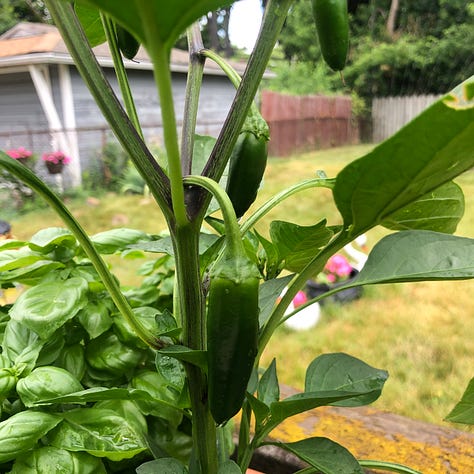
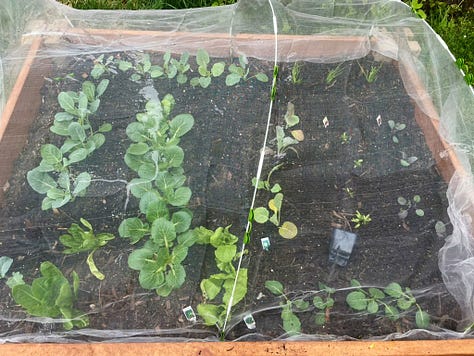
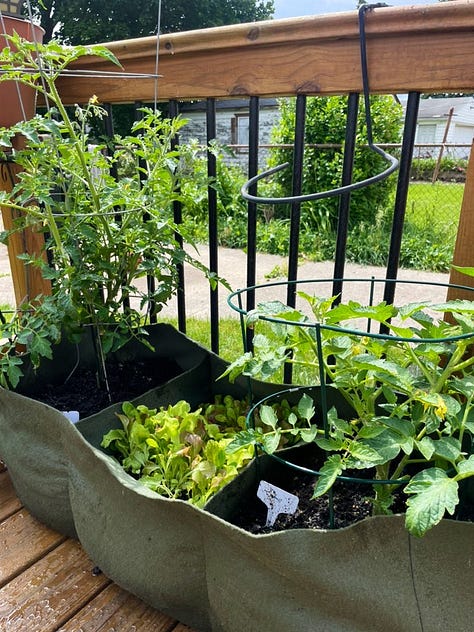
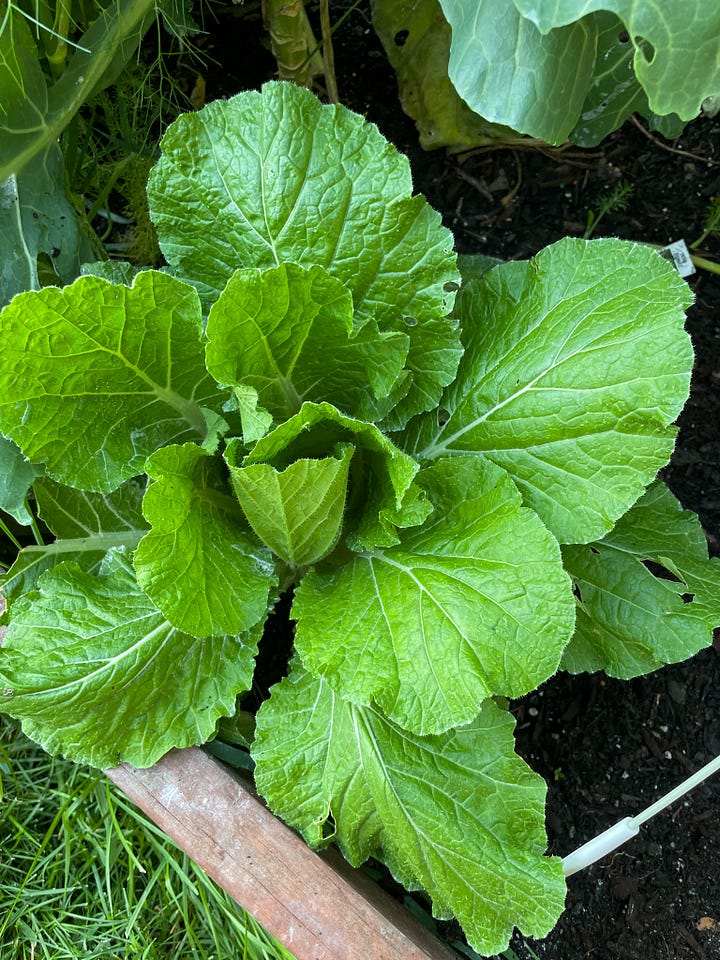
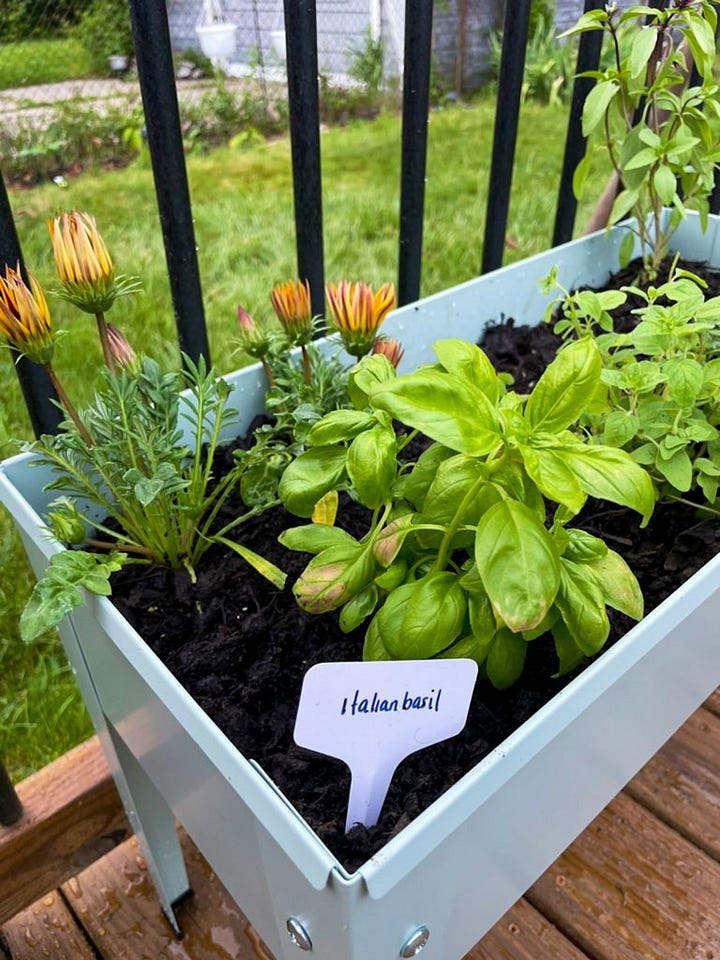
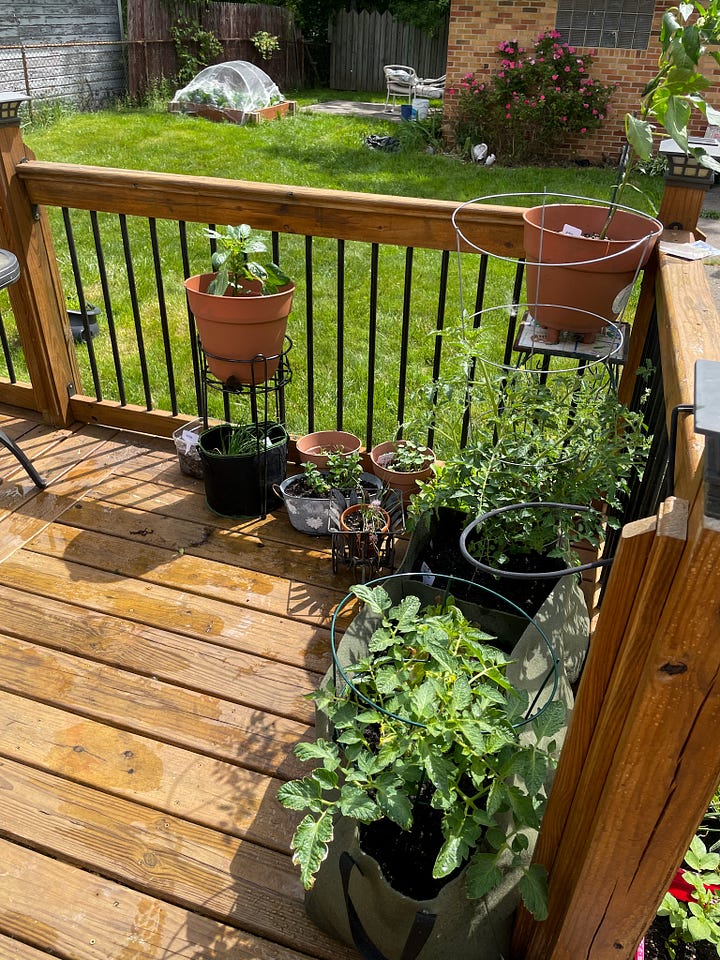
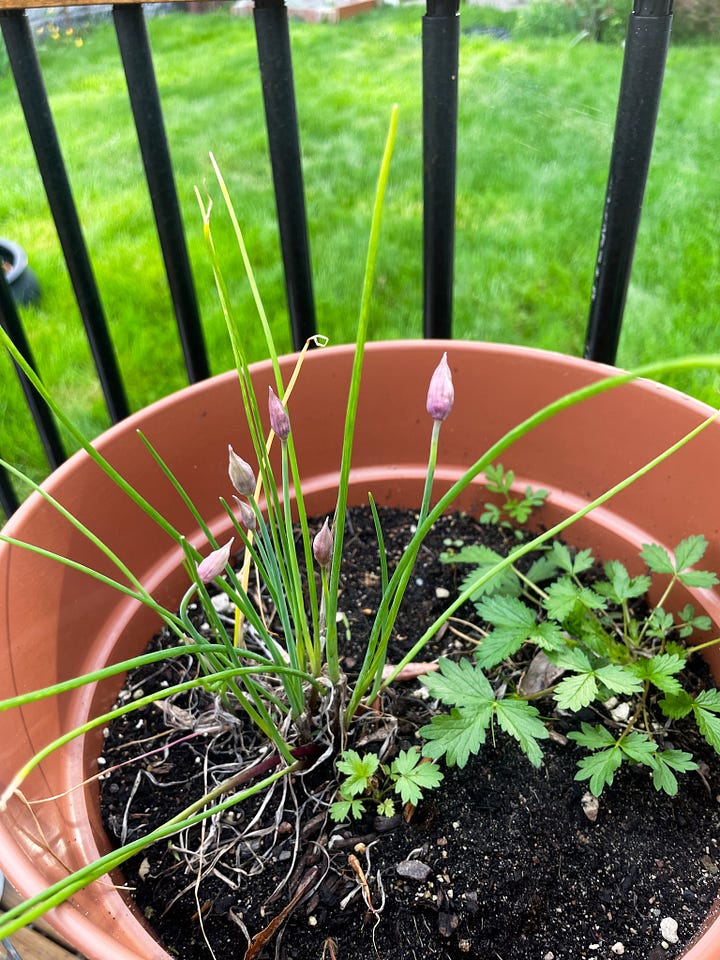
Where to Start:
The most important part is to plan exactly where your pots or containers will be. Whether this is a small portion of your patio, a window, or on the side of your house, you want to ensure that your plants will get the accurate amount of sunlight and natural watering from rain.
Next, choose your containers. Not all containers are created equal. Size, material, and drainage all matter. This is very important because you want to ensure that the soil has enough drainage holes to prevent the roots from rotting and enough space to allow them to grow and produce fruit. Below are my suggestions for picking the perfect pot for your container gardening projects.
Size: Bigger is better for veggies—small pots dry out fast and stunt root growth. Go for at least:
Herbs: 6–8" deep
Lettuce/greens: 8–10" deep
Tomatoes/peppers: 12–18" deep
Material:
Terracotta: Breathable and pretty, but dries out quickly.
Plastic or glazed ceramic: Retains moisture better, and are great for hot climates.
Fabric grow bags: Affordable, breathable, and space-saving. My favorite right now are Smart Pots.
Upcycled containers: These could be an old laundry basket, wooden pallets- Just be sure they have drainage holes
Choosing the correct soil would be the next step for successful container gardening. I’ll start this off correctly and tell you to ditch the Miracle-Gro (disrupts the natural soil ecosystem and harms natural biomes) and heavy garden soil. You want a light, fluffy potting mix designed for containers. When purchasing soil for container gardening, look for:
Good drainage (contains perlite or vermiculite)
Organic options with compost or worm castings
Add coconut coir or peat moss to improve moisture retention.
Bonus: Mix in a slow-release organic fertilizer at planting time.
Okay, time to move to the fun part: picking what you’ll plant (or what you’ll eat!) Start with what you love to cook and what will grow in your growing zone.
These are my suggestions for dependable, productive choices for container gardens:
Herbs:
Basil – Needs warmth and sun. Pinch often to prevent flowering.
Parsley – Great for cooler weather, rich in vitamins.
Mint – Invasive! Always grow mint in its own pot.
Thyme, oregano, rosemary – Hardy, drought-tolerant, and flavor-packed.
Leafy Greens:
Lettuce – Quick to grow and cut-and-come-again.
Spinach – Loves cooler temps, great in early spring/fall.
Arugula – Peppery flavor and fast-growing.
Fruiting Veggies:
Tomatoes – Choose determinate (bush) or dwarf varieties for pots.
Peppers – Sweet or hot, compact and productive.
Cucumbers – Bush types or trailing varieties trained on trellises.
Fruits:
Strawberries – Grow beautifully in hanging pots or stacked planters.
Dwarf citrus – Lemons or calamondin oranges need large pots and plenty of sun. You may have to bring these indoors once the frost begins.

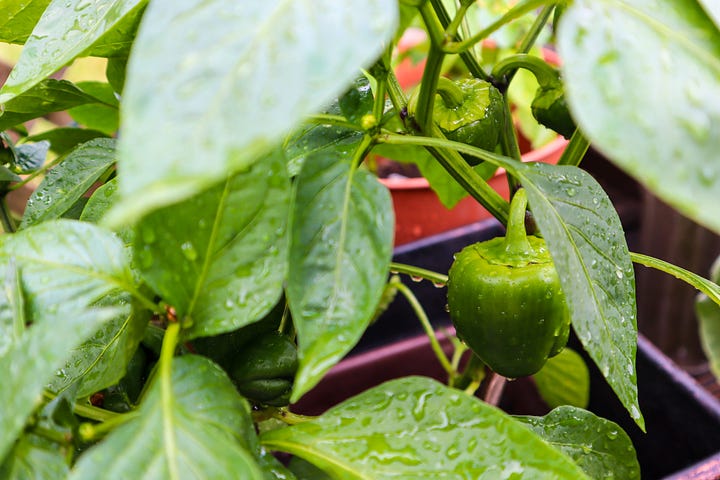
What to Do Next?
Give them sunlight, feed them, and make sure everything is hydrated. Just like us, huh?
Most edibles need at least 6 hours of full sun daily. South or west-facing spots are ideal.
Herbs like mint, parsley, and chives can tolerate partial sun.
Fruiting crops like tomatoes and peppers need full sun to thrive.
Container plants dry out quickly. My general rule is to water when the top inch of soil feels dry.
Morning is best.
Avoid soggy soil—roots can rot. Use pots with good drainage.
Consider a drip irrigation system or self-watering pots if you’re forgetful.
Plants in containers need regular nutrients—much more than in-ground gardens.
Add compost or slow-release fertilizer when planting.
Supplement every 2–3 weeks with a liquid organic fertilizer (worm castings or compost tea).
With these steps, you’ll be on your way to successfully starting a container garden and closer to creating your own farm-to-table experience at home. I’d love to see your container setups—whether it’s a basil pot in the kitchen or a full-blown patio jungle. Tag me @elle.thefoodie or drop a comment on Substack with what you’re growing and cooking!



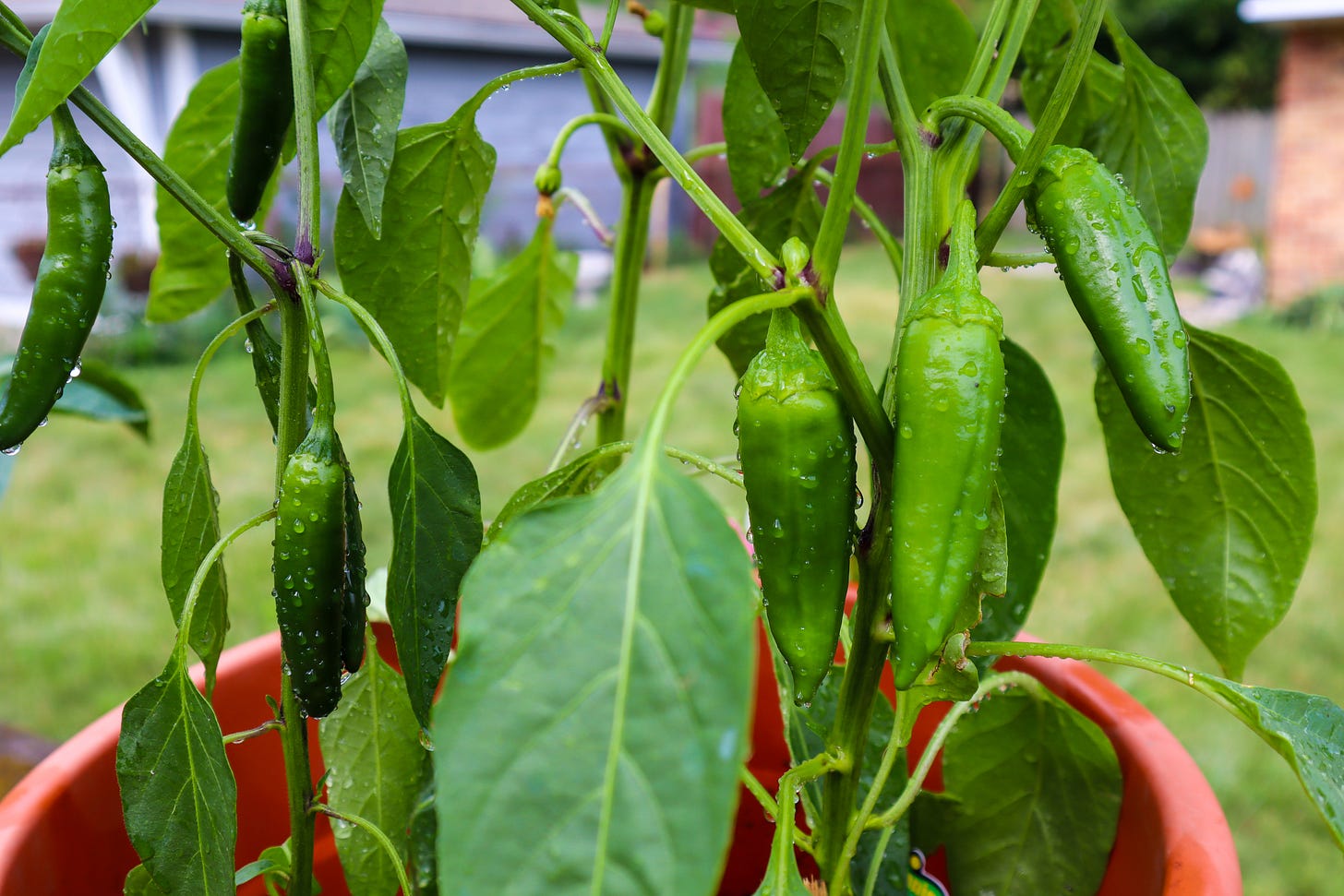
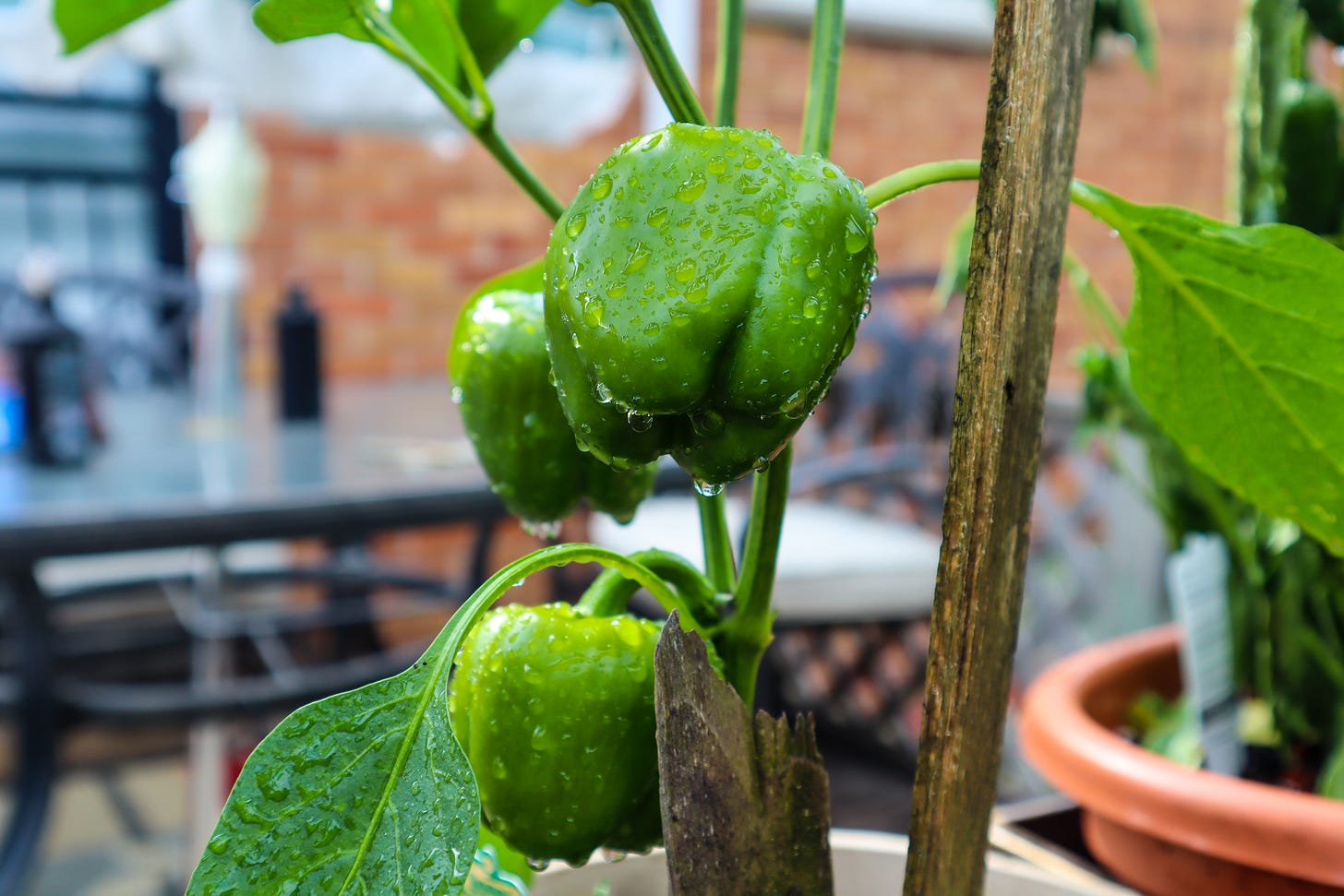
I love this so much. We live on a mountain 🏔️ in Spain, and want to grow on our roof terrace. We love your set up and are inspired!